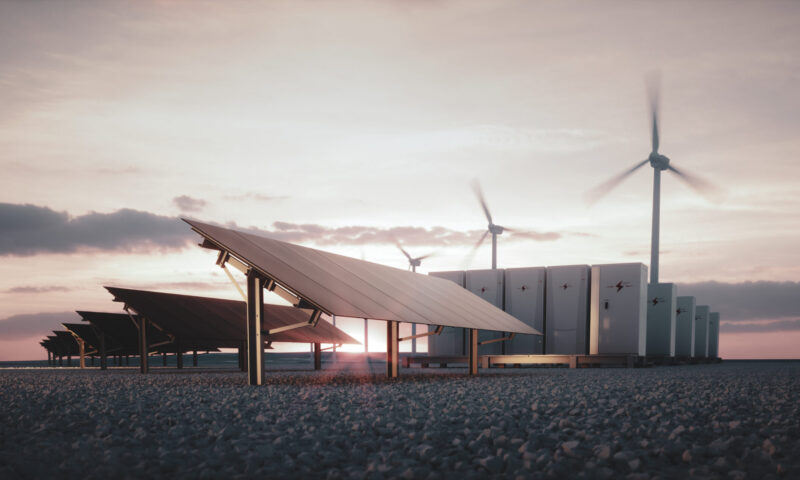As the share of photovoltaics in overall electricity production increases, the interest in various forms of subsidizing it is also growing. No wonder, because it is the most affordable of renewable energy sources and the simplest way to actually reduce the level of electricity consumption from the general grid and, consequently, to visibly reduce electricity bills. Despite changes in co-financing from the Moje Prąd program by as much as PLN 2,000, it is still possible, often complete, to reduce the costs of investing in your own photovoltaics in the form of a thermal modernization relief. What is this relief and who can benefit from it? That’s what we’re talking about today.
Relief for thermal modernization, i.e. deduction of photovoltaics from income tax
The amount of deduction for thermal insulation costs is up to PLN 106,000. PLN in the case of spouses (PLN 53,000 per person). Importantly, this amount does not apply to only one investment. Tax deductions can be made simultaneously for all modernizations of buildings owned by the taxpayer. Additionally, the thermal modernization relief is available within 6 years of making the investment, which gives a certain margin of error for those who forget to use it.
The basis for the deduction of photovoltaics from income tax are two acts: on personal income tax and the act on flat-rate tax on certain income earned by natural persons. Thermal modernization relief is also called thermal insulation relief. For the first time, it could be used when settling PIT for 2019, because that’s when, at the beginning of the year, changes regarding the tax deduction of photovoltaics based on the above-mentioned acts came into force.
Who can benefit from the thermal modernization relief?
According to the law, the relief is available to taxpayers who are natural persons and who settle their taxes according to general principles (i.e. with a tax rate of 17% or 32%), are taxpayers of income tax settled on a straight-line basis or pay a lump sum on recorded income.
The meaning of the relief is based on the deduction of eligible costs incurred for the installation of micro-installations in a single-family building, i.e. the costs of purchase, transport and assembly, and apply to owners and co-owners of detached, semi-detached and terraced houses that serve to meet housing needs. A detailed catalog of incurred expenses, which is the basis for PIT deduction, is specified in the regulation of the Minister of Investment and Development.
The above-mentioned buildings may be allocated no more than two residential premises or one residential premises and a usable space with a total area of no more than 30% of the total area of the given facility. Additionally, please remember that the relief applies to costs incurred directly by the owner (co-owner) of the house – it does not include the amount obtained from subsidies, e.g. the Moje Prąd program, or from provincial environmental protection funds. However, financing the entire investment is not excluded; in this case, you can deduct the total cost of the loan taken out to install a PV installation in your home. Thermal modernization relief is also available in the case of installing a PV installation on a building other than a residential building, provided, however, that it will serve to meet the electricity demand of the house, and not, for example, only a detached garage or other farm building.
Importantly, to benefit from the thermal modernization relief, you can apply for reimbursement of the costs incurred only in the case of houses that have already been built and therefore put into use. Additionally, all expenses incurred in connection with the installation of photovoltaics should be documented with invoices with the gross purchase value and added VAT, issued by a service provider who is a payer of goods and services tax and does not benefit from VAT exemption.
Important dates
A taxpayer who wants to deduct photovoltaics from their income should know that the investment does not have to be completed in one tax year to be able to benefit from the thermal modernization relief. This project may be implemented in several stages, provided that the installation of the installation must be completed within 3 years of incurring the first costs, and each of them must be settled in tax according to the date on the invoice for the service. It is therefore possible to count down subsequent stages for three consecutive years. However, this is risky because these deadlines must be carefully monitored if we do not want to be forced to return the unduly granted relief if, for example, the permissible duration of the investment is exceeded.
The law allows for a situation where the amount of relief granted exceeds the amount of annual income documented in the tax return. In this case, the relief will still apply in the amount corresponding to the total costs incurred, but it will be divided into subsequent calendar years, with the reservation that the refund granted may be spread over a maximum of 6 subsequent years from the end of the calendar year in which the first expense was incurred.
An important issue to remember concerns the content of the tax return if, for example, after deducting photovoltaics from the income tax for 2019, we were granted a subsidy, e.g. from the Moje Prąd program. In a situation where we have deducted from tax the entire costs we incurred in an investment completed in 2019, the funds obtained from other subsidies in 2020, i.e. e.g. PLN 5,000, must be added in full as income for 2020. Otherwise, we can be held criminally and fiscally liable, which certainly no one wants to do. It will be appropriate to deduct investments closed in 2021 and obtain funding of PLN 3,000 from the Moje Prąd program in 2022.




